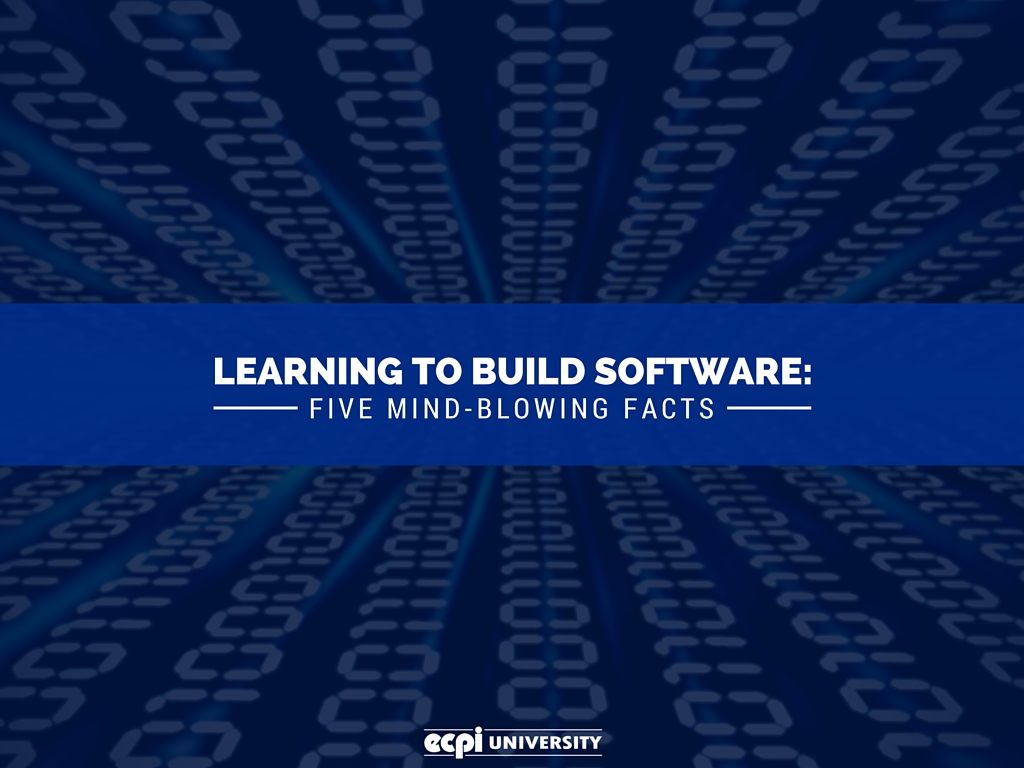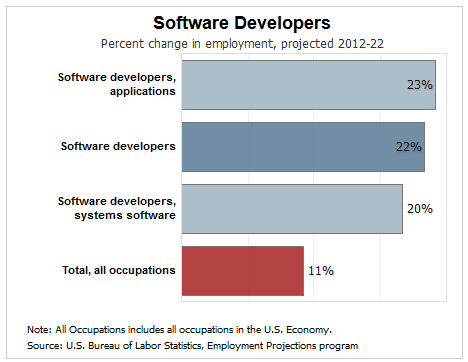
Humans have always struggled to understand our world by analogy.
Whenever something new comes along, we connect it to old ideas. The Chinese philosopher Gaozi, living and speaking 420-350 BCE, offered many, such as “Righteousness is like a bowl or cup,” and “Human nature is like whirling water.” The struggle to comprehend the new gives us weird concepts in computer science. For example: software developers build software using tools from tool boxes.
None of that is correct, since the software developer really arranges seemingly endless 0s and 1s into momentary electronic order without actually opening a box brimming with tools. But to understand the immense work involved in software development, we talk of virtual worlds built using virtual tools. Wrapping your head around the actual work of software development is mind blowing. Allow us to demonstrate.
Fact: Software and Hardware Blur
Today’s devices and applications cannot be separated from their software. The analogy here is the software, the brain, cannot be removed from the body, the hardware. The software developer has to work with other engineers and disciplines to create the new products:
- Wearables and medical sensors—Health information bracelets provide data for doctors and patients alike, and requires software both can access privately, like having a private nurse (that’s another analogy)
- GPS applications—iBeacon integrates 4D location awareness with GPS and tracking to deliver customized messages to users, like your own personal shopper (that’s also an analogy)
Fact: Software Developers Have to Choose How to Use Their Powers
Software developers are thrust into the classic science-fiction role of the Mad Scientist, because they can and do develop programs that invade privacy, yet advance our society. The analogy here could be that new apps are like explosives—you can topple mountains to create roads to the future, or you can level whole countries.
Individuals have to tread carefully, and developers have to behave ethically, as we divulge more and more of ourselves to companies operating exclusively in “clouds” and “behind firewalls.” Again, these analogies give us a way to comprehend the gargantuan amounts of data that exist about each of us.
 We are happy when a coupon arrives for a specific brand or product we like; yet we get upset when an advertisement intrudes based on an algorithm that linked a single search query to our current, unrelated activity.
We are happy when a coupon arrives for a specific brand or product we like; yet we get upset when an advertisement intrudes based on an algorithm that linked a single search query to our current, unrelated activity.
Younger users may have no problem giving up large slices of themselves for the supposed benefits of consumer offers and insights they get in return. Older app users have long memories, however. Many folks remember Microsoft’s Office Assistant named Clippy, the much-abused paperclip feature thrust upon an unwitting public from 1997 to 2003. If you are rounding up a gang of torch-bearing villagers, Kevan J. Atteberry was the Evil Genius behind Clippy. Good luck storming his castle.
Fact: Yes, We Know Where Your Mouse Has Been
Metacognition means thinking about thinking.
Software development that tracks software use is, for lack of a better term, metasoftware. The analogy here is that software development is like being in a mirrored room, images reflecting into infinity. Products like Mouseflow and Inspectlet are software programs that track actual mouse movement of users, providing heatmaps to identify page-specific hotspots. Software development has advanced so fast that developers now write programs that monitor programs to tickle out consumer trends.
The next step is already underway: artificial intelligence software. NASA’s Advanced Supercomputing Division (NAS) hosts the Quantum Artificial Intelligence Laboratory to push the boundaries of quantum computers. These devices will solve optimization problems too difficult for supercomputers, with the answers helping with machine learning, pattern recognition, and system diagnostics. These devices will create software to create wholly artificial devices that learn, program, and create their own software.
Fact: Software Developers Can Make Great Money
 The Bureau of Labor Statistics (BLS) says that as of May, 2014, software developers were earning mind-blowing median annual wages of $102,880. This means half made more, half made less (roughly), but even the lowest-paid 10 percent were still earning a whopping $63,250 annually. No analogy is needed here: money is money. With the right skills and some natural curiosity, talented software developers are in high demand and rewarded handsomely for their work. The BLS predicts a 22 percent increase in employment through 2022.
The Bureau of Labor Statistics (BLS) says that as of May, 2014, software developers were earning mind-blowing median annual wages of $102,880. This means half made more, half made less (roughly), but even the lowest-paid 10 percent were still earning a whopping $63,250 annually. No analogy is needed here: money is money. With the right skills and some natural curiosity, talented software developers are in high demand and rewarded handsomely for their work. The BLS predicts a 22 percent increase in employment through 2022.
ECPI University Receives $130 Million Software Grant from Siemens http://t.co/O0ezj2ZH2m
— Jeff Macharyas (@jeffmacharyas) June 5, 2014
Fact: You are Not in the Club
If you are on the outside of software development looking in, you are not part of the revolution in design, technology and innovation. To even approach the on-ramp to today’s information superhighway (one more analogy), you need a solid education. Begin by exploring ECPI University’s program to earn a Bachelor of Science Degree in Computer and Information Science with a concentration in Software Development. In as little as 2.5 years, you could have all the tools (that's an analogy) and knowledge to start you on the path (yup, our final analogy) to professional and financial success. It could be the Best Decision You Ever Make!
DISCLAIMER – ECPI University makes no claim, warranty or guarantee as to actual employability or earning potential to current, past or future students or graduates of any educational program we offer. The ECPI University website is published for informational purposes only. Every effort is made to ensure the accuracy of information contained on the ECPI.edu domain; however, no warranty of accuracy is made. No contractual rights, either expressed or implied, are created by its content.
For more information about ECPI University or any of our programs click here: http://www.ecpi.edu/ or http://ow.ly/Ca1ya.


